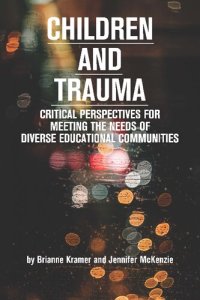
Ebook: Children and Trauma: Critical Perspectives for Meeting the Needs of Diverse Educational Communities (Educational Psychology: Meaning Making for Teachers and Learners)
- Year: 2022
- Publisher: Myers Education Press
- Language: English
- pdf
A 2023 SPE Outstanding Book Honorable Mention
According to the American Psychological Association (APA, 2015), trauma is an emotional response to a terrible event, which can lead to difficulties with emotional regulation, social relationships, and the development of physical symptoms. Traumatic experiences may include physical or sexual abuse, neglect, experiencing or witnessing violence, war, suicides, and disasters. Because of the prevalence of students with traumatic experiences in K-12 schools, development and use of trauma-informed practices (TIP) is currently increasing in educational spaces across the United States as educators and others who work with children become more aware of how socio-emotional development and exposure to trauma places children on a pathway through adulthood. Because of growth in these areas, it is important for educators and others who work with children to have a resource to consult. Children and Trauma: Critical Perspectives for Meeting the Needs of Diverse Educational Communities provides teachers, administrators, and others involved in education with an understanding of trauma-informed practices and explains how they can be used in the classroom. Additionally, school districts could utilize this text to implement professional development, particularly if they are considering creating a districtwide trauma-informed system.
Perfect for courses such as: Trauma-Informed Educational Practice | Psychology | Educational Psychology | Foundations of Education | Pedagogy | Methods of Emotional or Behavioral Disorders | Teaching Methods | Diversity in Education | Social Work | Human Development
According to the American Psychological Association (APA, 2015), trauma is an emotional response to a terrible event, which can lead to difficulties with emotional regulation, social relationships, and the development of physical symptoms. Traumatic experiences may include physical or sexual abuse, neglect, experiencing or witnessing violence, war, suicides, and disasters. Because of the prevalence of students with traumatic experiences in K-12 schools, development and use of trauma-informed practices (TIP) is currently increasing in educational spaces across the United States as educators and others who work with children become more aware of how socio-emotional development and exposure to trauma places children on a pathway through adulthood. Because of growth in these areas, it is important for educators and others who work with children to have a resource to consult. Children and Trauma: Critical Perspectives for Meeting the Needs of Diverse Educational Communities provides teachers, administrators, and others involved in education with an understanding of trauma-informed practices and explains how they can be used in the classroom. Additionally, school districts could utilize this text to implement professional development, particularly if they are considering creating a districtwide trauma-informed system.
Perfect for courses such as: Trauma-Informed Educational Practice | Psychology | Educational Psychology | Foundations of Education | Pedagogy | Methods of Emotional or Behavioral Disorders | Teaching Methods | Diversity in Education | Social Work | Human Development
Download the book Children and Trauma: Critical Perspectives for Meeting the Needs of Diverse Educational Communities (Educational Psychology: Meaning Making for Teachers and Learners) for free or read online
Continue reading on any device:

Last viewed books
Related books
{related-news}
Comments (0)